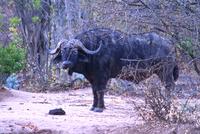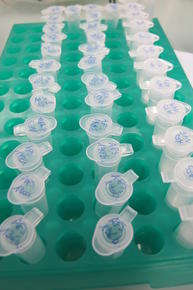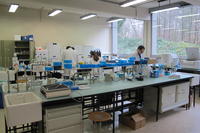Nathalie Smitz
Last update: 4 August 2016
Summary
The objectives of this thesis are to study the genetic structure of the African buffalo at different scales of time and space.
The first part is concentrated at the continental scale (phylogeographic study), with samples coming from the whole distribution area of the species (Nind=766), comprising samples of all 4 subspecies recognized based on morphological data (S. c. caffer, S. c.nanus, S. c. brachyceros, S. c. aequinoctialis). This part is based on the study of the D-Loop sequence (mtDNA). We aimed to I) test whether there is a correspondence between the distinct morphological ecophenotypes and the genetic lineages, and II) infer the phylogeographic history that has led to the observed distribution of genetic and phenotypic variation.
The second axis is concentrated at the population scale (population genetics), especially of Southern Africa. It is based on the study of the genetic variation of 17 microsatellites (14 autosomal and 3 Y-chromosomal microsatellites). The main purpose is to determine the general structure of the populations of S. c. caffer buffalos by mean of demographic parameters as genetic drift, migration rate, bottleneck events etc. We aim to identify the inter-connectivities between sampled National Parks and Game Reserve of Southern Africa.
The final axis is focused at the scale of the herds within one park, covering three different countries (Zimbabwe, Mozambique and South Africa). Based on a large library of single nucleotide markers, we aim to determine which are the biogeographical barriers limiting or favouring the genetic flow, and subsequently, limiting or favouring the dispersal of diseases between the herds of buffalos within the transboundary national park of the GLTFCA.
Among the wild species, the African buffalo is known to be an important reservoir of diseases, favouring their dispersal by mean of their movements. The close phylogenic proximity with the domestic cattle poses severe problems of trans-species disease transmission. Our study has a direct interest to estimate the risks of disease transmission at the interface between cattle and buffalo.
Last update: 4 August 2016



